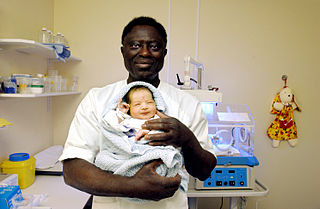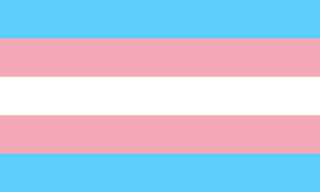Feminism
General
Many feminists consider sex to only be a matter of biology and something that is not about social or cultural construction. For example, Lynda Birke, a feminist biologist, states that "'biology' is not seen as something which might change." [108] However, the sex/gender distinction, also known as the Standard Model of Sex/Gender,[ original research? ] is criticized by feminists who believe that there is undue emphasis placed on sex being a biological aspect, something that is fixed, natural, unchanging, and consisting of a male/female dichotomy. They believe the distinction fails to recognize anything outside the strictly male/female dichotomy and that it creates a barrier between those that fit as 'usual' and those that are 'unusual'.[ who? ][ original research? ] In Anne Fausto-Sterling's Sexing the Body she addresses the birth of children who are intersex. In this case, the standard model (sex/gender distinction) is seen as incorrect with regard to its notion that there are only two sexes, male and female. This is because "complete maleness and complete femaleness represent the extreme ends of a spectrum of possible body types." [109] In other words, Fausto-Sterling argues that sex is a continuum.
Rather than viewing sex as a biological construct, there are feminists who view both sex and gender as a social construct. [ who? ] Fausto-Sterling believes that sex is socially constructed because nature does not decide on who is seen as a male or female physically. Rather, doctors decide what seems to be a "natural" sex for the inhabitants of society. In addition, the gender, behavior, actions, and appearance of males/females is also seen as socially constructed because codes of femininity and masculinity are chosen and deemed fit by society for societal usage.
Some feminist philosophers maintain that gender is totally undetermined by sex. See, for example, The Dialectic of Sex: The Case for Feminist Revolution , a widely influential feminist text. [110]
Mari Mikkola has put forward the "Trait/Norm Covariance Model" as a suggested replacement for the sex/gender distinction. [111] [112] [113] [114] Arguing that the sex/gender distinction, as formulated in contemporary feminism, implies that "doing away with gender should be feminism's political goal", the model divides by descriptive traits and evaluative norms, rather than by sex and gender. In this model, the term "descriptive traits" includes physical and anatomical traits, roles, and self-conceptions. So for example, "sex traits" (such as having ovaries) and "gender traits" (such as wearing make-up) are both subsumed under the category of descriptive traits, whereas "being feminine" is taken as an evaluative norm. Evaluative norms reflect how descriptive traits are evaluated by external observers, and certain descriptive traits may covary with certain evaluative norms. So for example the trait "having long hair" covaries strongly with feminine norms in some cultures, and less so in others.
Limitations
Lorber
Some feminists go further and argue that neither sex nor gender are strictly binary concepts. Judith Lorber, for instance, has stated that many conventional indicators of sex are not sufficient to demarcate male from female. For example, not all women lactate, while some men do. [115] Similarly, Suzanne Kessler, in a 1990 survey of medical specialists in pediatric intersexuality, found out that when a child was born with XY chromosomes but ambiguous genitalia, its sex was often determined according to the size of its penis. [116] Thus, even if the sex/gender distinction holds, Lorber and Kessler suggest that the dichotomies of female/male and masculine/feminine are not themselves exhaustive. Lorber writes, "My perspective goes beyond accepted feminist views that gender is a cultural overlay that modifies physiological sex differences ... I am arguing that bodies differ in many ways physiologically, but they are completely transformed by social practices to fit into the salient categories of a society, the most pervasive of which are 'female' and 'male' and 'women' and 'men.'" [115]
Moreover, Lorber has alleged that there exists more diversity within the individual categories of sex and gender—female/male and feminine/masculine, respectively—than between them. [115] Hence, her fundamental claim is that both sex and gender are social constructions, rather than natural kinds.
Monique Wittig
A comparable view has been advanced by Linda M.G. Zerilli, who writes regarding Monique Wittig, that she is "critical of the sex/gender dichotomy in much feminist theory because such a dichotomy leaves unquestioned the belief that there is a 'core of nature which resists examination, a relationship excluded from the social in the analysis—a relationship whose characteristic is ineluctability in culture, as well as in nature, and which is the heterosexual relationship.'" [117] Building off Wittig, Judith Butler also criticizes the sex/gender distinction. Discussing sex as biological fact causes sex to appear natural and politically neutral. However, she writes, "Are the ostensibly natural facts of sex discursively produced in the service of other political and social interests?" Butler concludes, "If the immutable character of sex is contested, perhaps this construct called 'sex' is as culturally constructed as gender; indeed, perhaps it was always already gender, with the consequence that the distinction between sex and gender turns out to be no distinction at all." [118]








